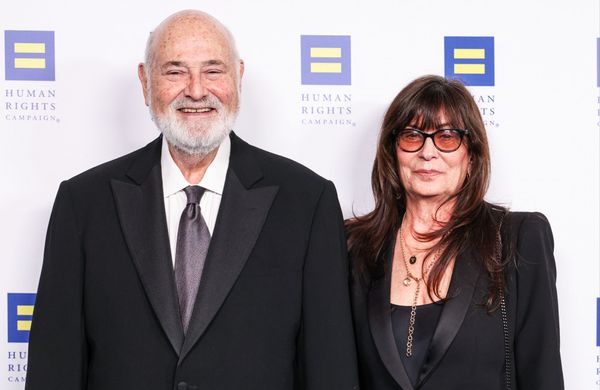
Adrian Hallmark made waves when he jumped from Bentley to Aston Martin in 2024. The two companies, though similar on the surface, couldn't have been in more different places. One overseen by a German monolith, the other… has been in the news a fair bit.
During the 2025 Le Mans race, Hallmark sat down with a group of journalists to talk about how he plans to make the company profitable, why being independent is a blessing, manual gearboxes, and much more.
"My mission was to do it in half the time it took to fix Bentley. Bentley took three years. We've got to do it in 18 months… which we're on track to do," Hallmark says of reinvigorating Aston Martin’s fortunes.
Part of that, he says, involves taking a long, hard look at how the business works.
"We've got great cars, but if you don't have a business that's efficient, if you don't look into every screw, every bolt… every panel on the vehicle, and make sure you're doing it competitively it just wastes money in the rush to try and make it work," he adds.
Adrian Hallmark is a gloriously candid CEO; he’s delightfully open about what’s going on within the company because, it seems, he wants to show that there’s a hugely profitable business in Gaydon waiting to bloom.

On looking into various ways to slim down production costs and up profitability, Hallmark brings up a single piece of metal used in the dashboard of a number of the company’s vehicles. It costs £1,250 to make—machining it down from solid aluminium to sheet metal, then laser cutting it is an expensive process, perhaps needlessly so.
He says that starting from sheet metal in the first place, the same piece would cost 'about £80.' The quality would be the same, but the process would be more streamlined and more cost-efficient.
Hallmark notes dozens of other examples of overly complex processes because, in the past, the job was simply to get cars built. Costly processes weren’t helped by overheads skyrocketing over the past four years, with revenues, says Hallmark, remaining the same. Going through each car, finding the cost sinks, and streamlining processes can only help. With processes like that, Hallmark reckons Aston Martin can make a net profit this year, "for the first time in, I think, 19 [years]."
You’d expect Aston Martin’s independence, far away from the sort of VW Group-shaped safety net Hallmark had at Bentley, would inflate costs—developing your own parts is notoriously costly, and having the likes of Porsche, Audi, and Lamborghini at your back to share the load is a good thing, right? Perhaps not…

'My mission was to do it in half the time it took to fix Bentley. Bentley took three years. We've got to do it in 18 months… which we're on track to do.'
"I wish I could give you the numbers," Hallmark smirks, "for us to develop a car is less than a third of the cost of the synergies."
The big group, he said, has lots of cost built in—staffing in Germany costs much more than in the UK and Italy, says Hallmark, and there are German suppliers which are also "about three times more expensive." And finally: "You've got rules of how they allocate cost across different brands, and you pay your share."
The downside of not being part of a big group, said Hallmark, is that you’re on your own. The upside, he says, is also… that you’re on your own.
"Instead of being locked into the system, you've got freedom to choose, and a lot of people want to do business," which Hallmark says is wonderful. But, with the caveat that it’s good so long as suppliers stay in business—something that’s become an issue thanks to, well gestures wildly at the wider world.

There’s another problem to be addressed at Aston: Range. Not the cars themselves, but where customers go once they’ve bought into the brand.
"If you look at the success of the other luxury brands, what they do, effectively, is every two years, every model's got the reason to change," explained Hallmark.
He asked the table what someone who’s bought a DBX707 would do next. Do they get another in a different colour? Would they go elsewhere? There needs to be another Aston to put them in.
The DBX S may have come out of nowhere, but the reason for it is clear: It’s where you go when you tire of 707 horsepower in your SUV. Expect more ‘S’ cars to appear as time goes on. There’ll be more dealers offering more cars, too, and hopefully more people will buy them.

'If you look at the success of the other luxury brands, what they do, effectively, is every two years, every model's got the reason to change.'
Hallmark continued: "It's a fairly conventional place, people, and quality of experience upgrade that we're doing together with those incremental products, and then within that three to five year period, we replace every car that we've got today with a completely new model, completely new technology."
How much of that future product will be electric? Perhaps not too much: "There are very few countries declaring they’ll ban engines in 2035. Ninety percent of our volume in 2040 could still be engines at the moment, except for the UK [though a small manufacturer exception will help that along, too - ed]."
While electrification might not be at the top of the business plan, manual gearboxes are. Sort of.
It’s not the work of simply choosing a ‘box, dropping it in the car, and calling it a day—software gets in the way. Cars run on the stuff, and they legally need to do certain things (market-dependent). Lobbing in an imprecise, human-controlled stick messes with that process.

"Making the connections between all of these legally required systems and a missed gear," noted Hallmark, "is very difficult. It can be done. We are planning to do it, but the cost of it is hard compared with linking it to a double clutch."
With Valhalla imminent and a proven front-engined platform, more specials like the Valour and Valiant are on the way. Though not, stressed Hallmark, all with slightly different bodies at silly volumes. They’ll be different, collectible, and desirable to the right people.
The plan is simple when it’s coming from the boss’s mouth in a hospitality suite in the paddock at Le Mans, but Hallmark is confident it can be done. His goal doesn’t appear to be making Aston Martin a profitable company in the short term, but sustainably so, and to leave something of a legacy in the process.
Hallmark will be doing so on a time limit: "I don’t really want to work for more than five years. I don’t want to be doing a full-time CEO job at 67 years of age. I might say something different when I’m 66, but now I don’t want to be doing this forever."
The challenge has been laid out, the time limit set. Watching Adrian Hallmark change Aston Martin is going to be fascinating.







